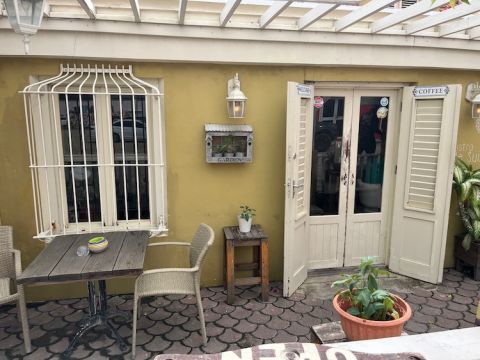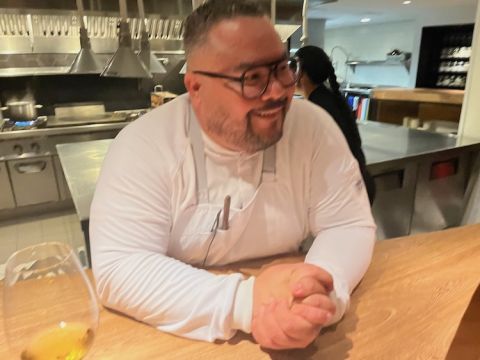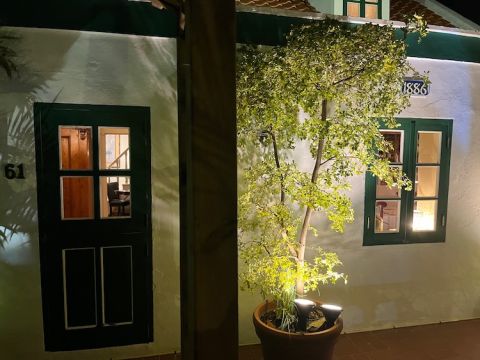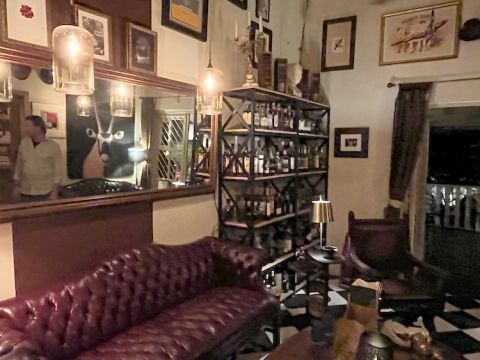I have to confess that when, earlier this year, we were invited to Aruba to celebrate the twentieth anniversary of importer Arion Wine Company, I didn’t have a clue where it was.
It is part of the Dutch West Indies, a sister island to Curaçao and Bonaire, off the coast of Venezuela and, fortunately, outside Hurricane Alley. It is small, 19x6 miles (30x10 km), and pretty flat. And like much of the Caribbean, very little in the way of fruit, vegetables or dairy is grown here.
The climate is gorgeous and pretty consistent: high 20s and low 30s °C most of the year. Which all makes it a highly attractive island to visit. We were informed that there are approximately 120,000 Arubans on the island who are somewhat overwhelmed by each year’s two million tourists. They are predominantly from North America – those from Canada and the US get priority treatment on the mandatory, but very easy, online entry form – supplemented by cruise ship visitors. As a result, there is a lot of beef on the menus, but little offal; all the scallops have their roes removed; and your party will be referred to as ‘guys’ whether you are all male or not. Dutch tourists tend to head for Curaçao and Bonaire.
With an increasing influx from nearby Latin America, the close relationship between Aruba and the Dutch language seems to be fading and the use of Spanish is on the increase.
But such a change cannot hide the long association between Aruba and the Netherlands, a close relationship that was manifest in the locations of the cafe/restaurants we visited on our first two days, The Aruba Experience and Bistro de Suikertuin, or Sugar Garden. Both are examples of old Dutch cottages, whose thick walls were constructed over 150 years ago, fell into disrepair and have been lovingly restored by determined female proprietors.
Both are obviously extremely popular with the locals. Suikertuin’s kitchen revealed its generosity with a hearty bowl of chicken soup with ginger (the chef Ken Hom’s secret ingredient in chicken stock), followed by an overwhelming portion of ‘Grandma’s sukade’, a glistening beef stew. The crème brûlée came in too deep a dish for the top to be properly burnt but at US$60 for two, we had little to complain about.
The small, charmingly decorated rooms were cool even though it was extremely hot outside. And because it is so central in Oranjestad, Aruba’s capital, it is hugely popular with those who work close by – there was even a man in a shirt and a tie!
One other reason we felt so comfortable here, and this was a common feature everywhere we ate, was the overwhelming friendliness of the welcome from everybody working in the cafes and restaurants we visited. Perhaps our timing was fortuitous – just before the peak season gets under way – but I suspect not. Service, everywhere we ate, was extremely friendly and well informed.
Part of the credit for this must lie with the hotels which presumably trained many of the staff who looked after us. While we stayed in the small and well managed Manchebo resort, all the major hotel groups have outlets on Aruba with their own cafes, bars and restaurants which have trained numerous chefs. Two, in particular, have gone on to open their own restaurants and are encouraging the young Aruban cooks of the future.
Teddy Bouroncle was born in Lima, Peru before his career brought him to Aruba where he now runs the Lima Bistro overlooking the water at the Oranjestad Marina. It boasts a busy open kitchen, English crockery on the tables and, waiting to be discovered, a barman who clearly knows what it takes to make a perfect pisco sour.
The food is just as exciting. I enjoyed a dish of scallops topped with shoyu butter and tiny crisp strips of potato then, in place of the offered amberjack, a fillet of mahi-mahi with yuca purée and bok choy. The fish was on the dry side, made more interesting with the sauce of chorizo and plantain, but the combination of vegetables was excellent. I will return for their cheesecake which intriguingly incorporates lucuma, a fruit found in the high Andean valleys of Chile, Bolivia, Peru and Ecuador. Powerful flavours here are allied with well-conceived textures.
Chef Urvin Croes, above, has opened Infini restaurant where, ably assisted by his restaurant manager, Jessika Theysen, he and his small team of four other chefs serve a maximum of 18 customers an extremely intricate eight-course set menu. Croes’s admirable focus is on encouraging local suppliers (the locations of six are listed on the back of his menu). We began with an excellent slice of bread made by T2PAN; an amuse-bouche of mushrooms grown by Rachel, a former tattoo artist; and a series of vegetables and herbs grown by HappyPonics, all of whom are fully credited.
Despite the undoubted quality and precision of the cooking, this meal left me unimpressed. Although there is some variety in the cooking style, the chefs’ actions and dishes were slightly too repetitive and the overall time spent watching them – three and a half hours – felt far too long to someone who less than 24 hours previously had sat for 10 hours in a plane to Aruba. Perhaps it was the timing of this particular dinner that was at fault. If it had not been the first night of our stay, I am sure I would have enjoyed the results of their very hard work more.
Finally, to Papiamento, the name of the island’s creole language given to a charming restaurant located in the former home of its owner, Eduardo Ellis. His business card proudly proclaims some of the establishment’s attributes: a premium bar; a wine library with a Wine Spectator award for its list (two glasses!); international cuisine; local specialities; a cigar lounge; and all of this with a tropical ambience.
Papiamento opened in Oranjestad in 1983 but when its landlords threatened a massive rent increase, Eduardo’s parents decided to move and it was his mother who had the idea of reopening in what had hitherto been their home and garden outside the capital. The small swimming pool around which tables cluster in the garden was where Eduardo learned to swim.
The restaurant has grown to fill every available space and is open only for dinner with everybody served outside usually, although some of the rooms in the atmospheric old homestead have been converted into private dining rooms. The place makes for wonderful customer-watching – le tout Aruba appears to be here, along with numerous tourists – and the sight of so many diners enjoying themselves in such a verdant and warm setting immediately brought back memories of our lunch at the San Angel Inn in Mexico City.
Here the food is good, particularly their version of tuna tartare, local lobster which is spicier than European lobster, and a handful of thick New Zealand lamb chops expertly grilled and served with a chimichurri sauce (a common feature on Aruba menus). Eduardo himself is the star attraction, languidly overseeing everything before switching into tour-guide mode as he showed us around the room that has become their temperature-controlled wine cellar; the room that has been redeployed into their cigar lounge; and their former dining room.
Next year should see his parents’ 60th wedding anniversary; the 40th anniversary of the restaurant; Eduardo’s 25th wedding anniversary; and his son’s 21st birthday. Papiamento will have plenty to celebrate.
The Aruba Experience John G Emanstraat 37, Oranjestad, Aruba; tel: +297 588 7878
Bistro de Suikertuin Wilhelminastraat 64, Oranjestad, Aruba; tel: +297 582 6322
Lima Bistro Weststraat 2, Oranjestad, Aruba; tel: +297 741 2705
Infini JE Irausquin Blvd 266, Aruba; tel: +297 280 8869
Papiamento Washington 61, Noord, Aruba; tel: +297 586 4544




















